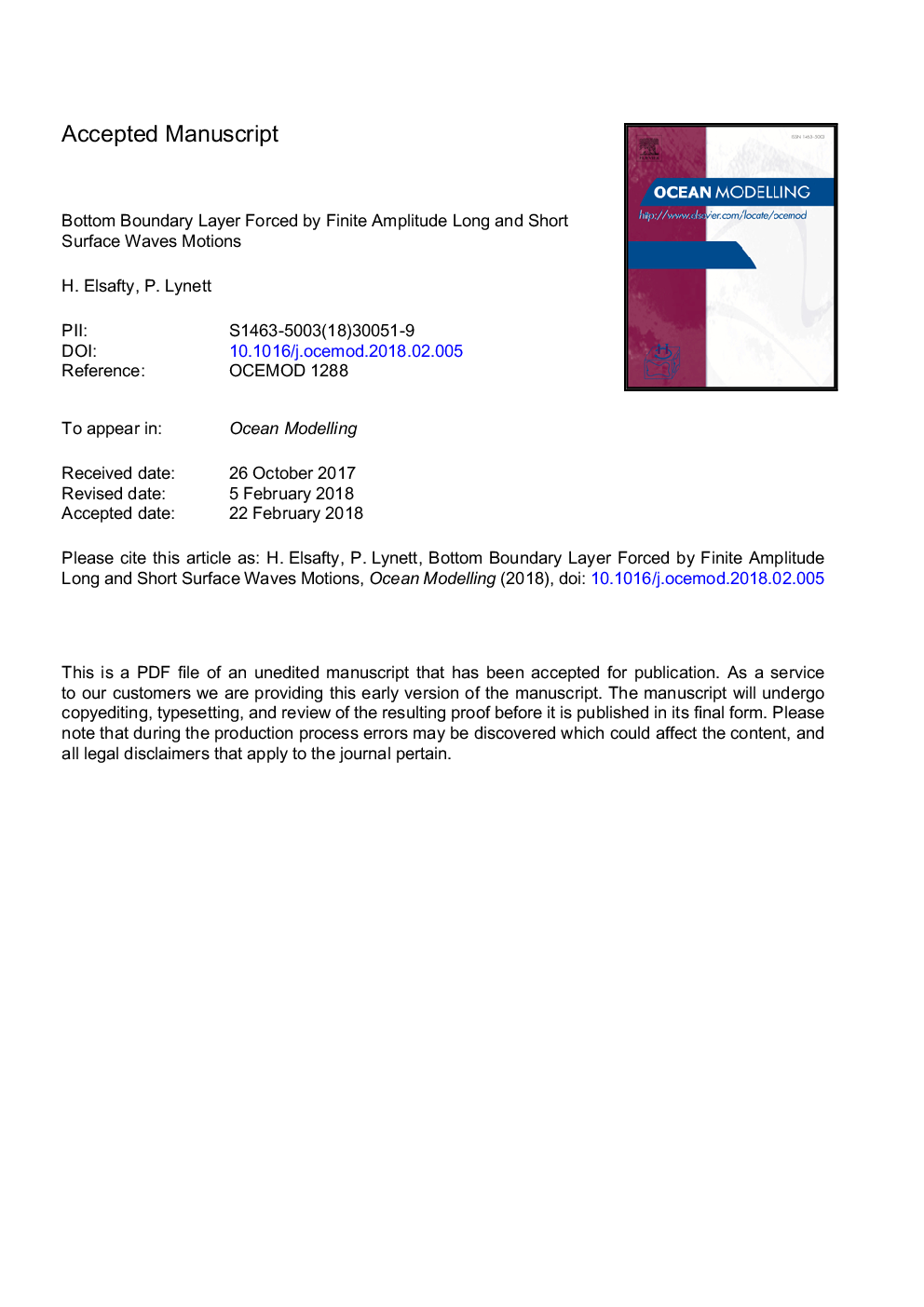| Article ID | Journal | Published Year | Pages | File Type |
|---|---|---|---|---|
| 8886520 | Ocean Modelling | 2018 | 29 Pages |
Abstract
A multiple-scale perturbation approach is implemented to solve the Navier-Stokes equations while including bottom boundary layer effects under a single wave and under two interacting waves. In this approach, fluid velocities and the pressure field are decomposed into two components: a potential component and a rotational component. In this study, the two components are exist throughout the entire water column and each is scaled with appropriate length and time scales. A one-way coupling between the two components is implemented. The potential component is assumed to be known analytically or numerically a prior, and the rotational component is forced by the potential component. Through order of magnitude analysis, it is found that the leading-order coupling between the two components occurs through the vertical convective acceleration. It is shown that this coupling plays an important role in the bottom boundary layer behavior. Its effect on the results is discussed for different wave-forcing conditions: purely harmonic forcing and impurely harmonic forcing. The approach is then applied to derive the governing equations for the bottom boundary layer developed under two interacting wave motions. Both motions-the shorter and the longer wave-are decomposed into two components, potential and rotational, as it is done in the single wave. Test cases are presented wherein two different wave forcings are simulated: (1) two periodic oscillatory motions and (2) short waves interacting with a solitary wave. The analysis of the two periodic motions indicates that nonlinear effects in the rotational solution may be significant even though nonlinear effects are negligible in the potential forcing. The local differences in the rotational velocity due to the nonlinear vertical convection coupling term are found to be on the order of 30% of the maximum boundary layer velocity for the cases simulated in this paper. This difference is expected to increase with the increase in wave nonlinearity.
Keywords
Related Topics
Physical Sciences and Engineering
Earth and Planetary Sciences
Atmospheric Science
Authors
H. Elsafty, P. Lynett,
